Table of Contents
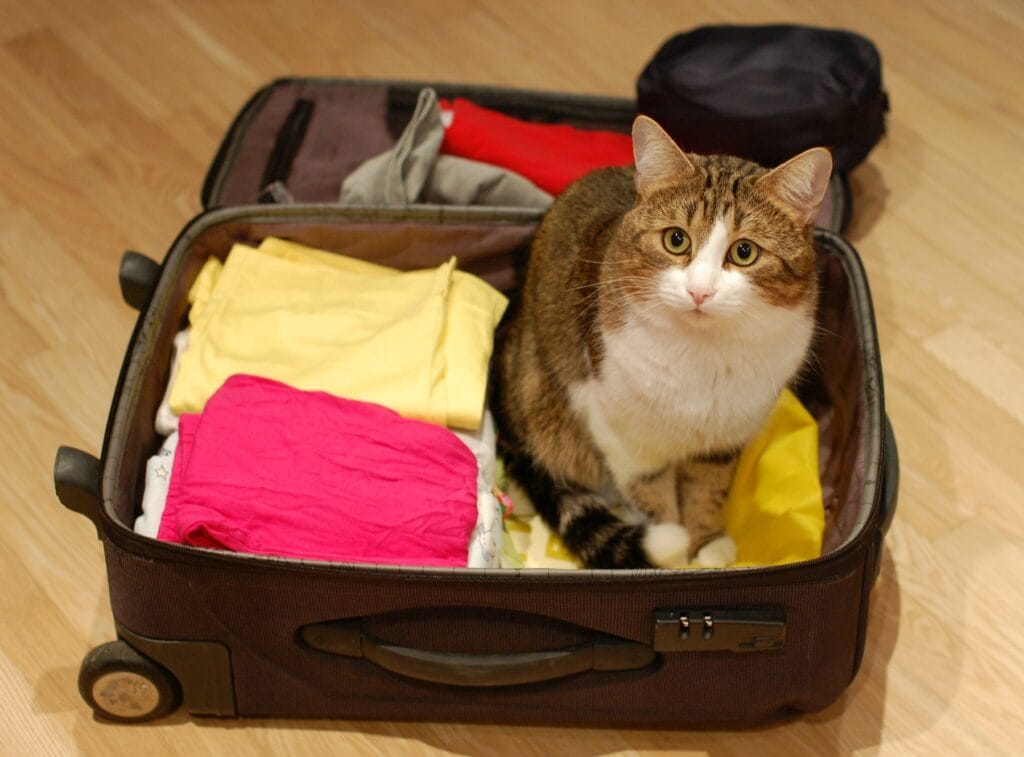
Travel with Cat from UK to Europe: A 2025 Guide for Pet Parents
Introduction
Traveling with your beloved feline companion from the UK to Europe can be a rewarding experience—but it also comes with unique responsibilities. As pet travel regulations continue to evolve post-Brexit, and with heightened awareness around animal welfare and biosecurity, it’s more important than ever to understand the correct procedures, documentation, transport methods, and accommodation choices when you decide to travel with a cat across borders.
In this 2025 guide, we’ll break down everything cat owners need to know about traveling from the UK to various European destinations—from preparing your pet passport to navigating ferry and air travel, customs rules, and finding pet-friendly accommodations. Whether you’re relocating, going on holiday, or just planning a long-term stay with your feline friend, this guide will make your travel experience smoother and safer.https://kanfservices.online/
Section 1: Understanding the Legal Requirements (Post-Brexit Updates 2025)
1.1 The Pet Travel Scheme (PETS) Post-Brexit
Since the UK left the EU, pet travel regulations have changed significantly. As of 2025:
- UK-issued EU Pet Passports are no longer valid for entry into the EU.
- You now need an Animal Health Certificate (AHC) issued by a licensed veterinarian no more than 10 days before travel.
- The AHC is valid for:
- 10 days for entry into the EU
- 4 months for onward travel within the EU
- 4 months for return to the UK
1.2 Required Documents
To travel with your cat from the UK to Europe, you will need:
- A microchip (ISO-compliant)
- A valid rabies vaccination (administered at least 21 days before travel)https://kanfservices.online/
- An AHC issued within 10 days before departure
- Tapeworm treatment is not required for cats but is essential for dogs (in case you travel with both)
External Resource:
For up-to-date details, refer to the official UK Government pet travel guidance.
Section 2: Preparing Your Cat for International Travel
2.1 Visit Your Vet
Schedule an appointment with a DEFRA-authorized vet for the following:
- Microchip check
- Rabies vaccination
- Issue of Animal Health Certificate
- General health check-up
Ask your vet to also discuss travel anxiety and consider a calming pheromone spray or prescription, if necessary.
2.2 Acclimate to Travel Crate
Before traveling:
- Get an IATA-approved travel crate.
- Let your cat spend time in the crate daily.
- Add familiar bedding and toys to reduce stress.
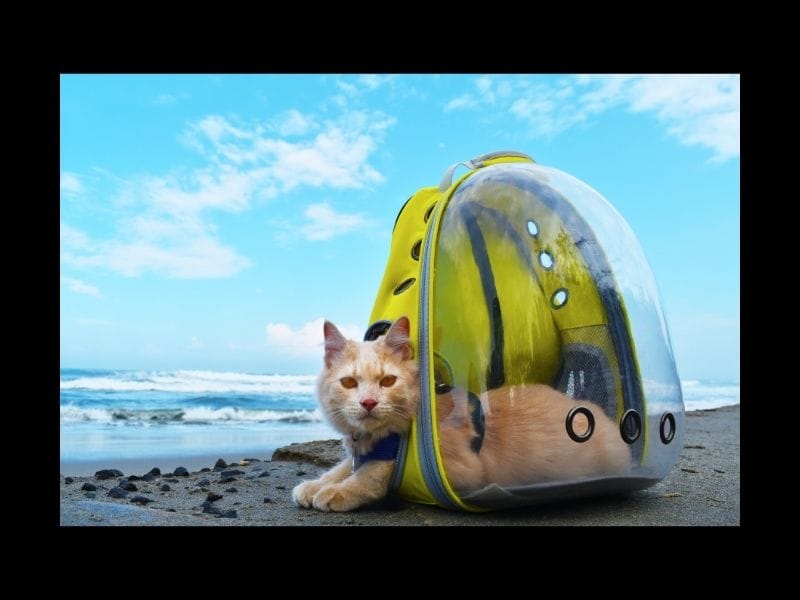
2.3 Packing List for Your Cat
- Travel crate (airline/ferry approved)
- Water and collapsible bowl
- Dry or wet food for the journey
- Litter tray and liners
- Pet passport or AHC
- Harness and leash
- Vaccination records
- ID tag with contact info
Section 3: Modes of Transportation from UK to Europe with Your Cat
3.1 Traveling by Car and Ferry
This is often the most cat-friendly way to travel. Cats can stay with you in your vehicle, which reduces stress. Popular ferry routes include:
- Dover to Calais
- Newhaven to Dieppe
- Hull to Rotterdam
Choose operators like DFDS Seaways and Brittany Ferries, which allow pets in cars. Book a pet-friendly cabin for longer journeys.https://kanfservices.online/
3.2 Eurotunnel Le Shuttle
The Eurotunnel is a great choice:
- Your cat remains with you in your car.
- Journey time is only 35 minutes.
- Cost for pets is around £22 per pet per journey.
Visit Eurotunnel Pet Travel for up-to-date policies.
3.3 Flying with a Cat
While air travel is more stressful, it’s necessary for longer distances (e.g., Spain, Italy, Greece). Most airlines have cargo and cabin options depending on pet weight and airline policies.
Top cat-friendly airlines in 2025:
- Lufthansa
- KLM
- Air France
- British Airways (through IAG Cargo)
You’ll need to:
- Book in advance
- Provide an IATA-compliant pet carrier
- Submit documentation for customs
Note: Some airlines do not allow pets in the cabin—confirm with your airline before booking.
Section 4: Crossing European Borders with Your Cat
4.1 EU Entry Points with Pet Facilities
Make sure to enter the EU through an approved Traveller’s Point of Entry (TPE), such as:
- Calais, France
- Rotterdam, Netherlands
- Barcelona, Spain
At these points, your cat’s microchip and documents will be checked.
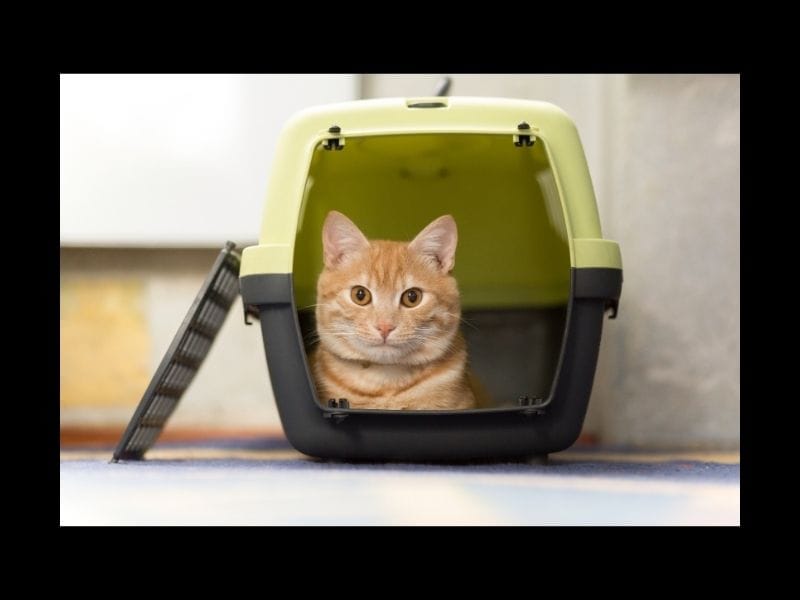
4.2 Customs Declarations
Some EU countries may require:
- Declaration forms
- Veterinary inspection (random)
Always carry printed and digital copies of:
- AHC
- Rabies certificate
- Microchip details
Section 5: Pet-Friendly Accommodation in Europe
In 2025, traveling with pets in Europe is easier than ever thanks to increased demand for pet-friendly stays.
Top Accommodation Platforms:
- Booking.com – Filter by “Pet Friendly”
- Airbnb – Use pet-friendly tag
- BringFido.com – Ideal for detailed pet rules
- Pawshake & TrustedHousesitters – For long stays with other pet lovers
Countries with the most pet-welcoming accommodations:
- France
- Germany
- Netherlands
- Austria
- Spain
Ask about:
- Pet size restrictions
- Cleaning fees
- In-room litter boxes
Section 6: Tips for a Stress-Free Cat Travel Experience
6.1 During the Journey
- Keep your cat in a quiet, dark crate to reduce anxiety.
- Offer water and food during breaks.
- Never open the crate unless in a secure indoor space.
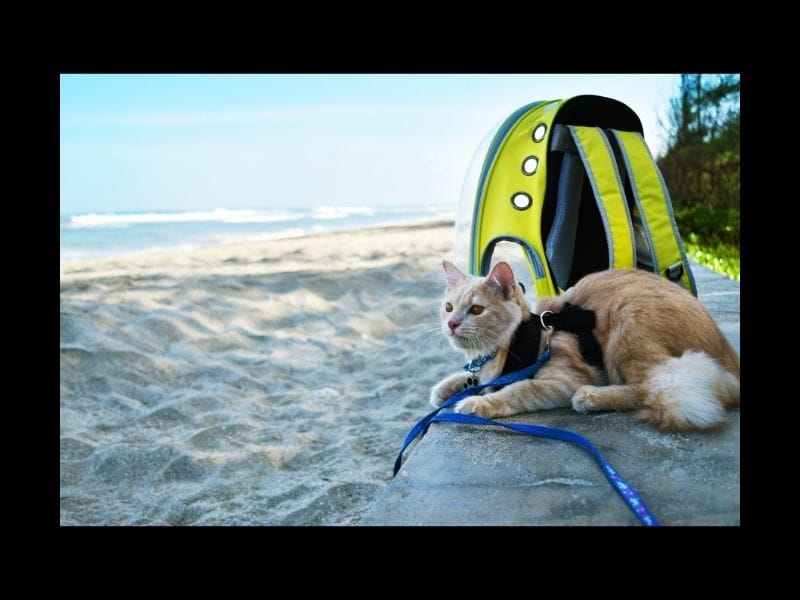
6.2 After Arrival
- Give your cat a familiar blanket and toys.
- Allow your cat to explore one room at a time.
- Maintain a feeding and litter box routine.
6.3 Emergency Contacts
Save contacts for:
- Local veterinarians
- Emergency pet clinics
- Embassies (in case of document loss)
Section 7: Returning to the UK with Your Cat
When returning, your cat will need:
- Microchip
- Valid rabies vaccination
- Animal Health Certificate issued in the EU or UK Pet Passport issued in the EU
- Travel through approved ports (Eurotunnel, Heathrow, etc.)
Note: As of 2025, the UK does not recognize UK-issued EU Pet Passports for re-entry—you must get a new AHC from an EU vet.https://kanfservices.online/
FAQs – Traveling with a Cat from the UK to Europe
Q1: Can I take my cat on the Eurostar?
No, pets are not allowed on Eurostar trains, except service animals.
Q2: Do I need a pet passport?
No. You need an Animal Health Certificate, unless your cat has an EU-issued passport from an EU country.
Q3: How much does pet travel cost?
Costs vary:
- AHC: £100–£200
- Eurotunnel pet fee: £22
- Ferry pet cabin: £50–£100
- Flights: £100–£500 depending on the airline
Q4: Can kittens travel to Europe?
Only kittens over 15 weeks old with completed rabies vaccination (after 12 weeks + 21-day wait) can travel.
Q5: Do I need pet insurance?
Strongly recommended. Some EU vets may require upfront payment. Consider a plan with overseas emergency coverage.
Conclusion
Traveling with your cat from the UK to Europe in 2025 is entirely possible with proper planning, documentation, and preparation. From securing your Animal Health Certificate to choosing the best mode of transport, you can ensure a safe, stress-free experience for both you and your feline companion.
With more pet-friendly services than ever, and a rising trend in pet-inclusive travel, your next European adventure with your cat can be just as comfortable as traveling solo—if not more fun.
Internal Links
External Links

Crossing European Borders with a Cat Post-Brexit
After Brexit, UK pet owners traveling to Europe need to follow stricter regulations than before. While traveling with your cat is still possible, you must plan for:
1. New EU Pet Travel Rules for UK Cats
Since the UK is now a “Part II Listed Country” by the EU, pet passports issued in Great Britain are no longer valid for travel to the EU. Instead, your cat will need an Animal Health Certificate (AHC), which must be issued no more than 10 days before travel.
Requirements include:
- Microchip (ISO-compliant)
- Valid rabies vaccination
- Animal Health Certificate (AHC)
➡️ For official guidance, refer to the UK government website:
https://www.gov.uk/taking-your-pet-abroad
Eurotunnel vs. Ferry Travel with a Cat
Choosing your method of transportation is critical for your cat’s comfort:
Eurotunnel Le Shuttle (Folkestone to Calais)
- Fastest and most pet-friendly method.
- Pets remain in your vehicle throughout the journey.
- Costs around £22 per pet.
- No need to remove the cat from their carrier.
Best for: Nervous or older cats who prefer a stable environment.
Ferries (Dover to Calais, Portsmouth to St. Malo, etc.)
- Longer travel time (90 minutes to 11 hours depending on route).
- Some ferries offer pet cabins or onboard kennels, but most require cats to remain in the car or designated areas.
Tip: Check with operators like Brittany Ferries and P&O Ferries for pet cabin availability.
Best Cat-Friendly European Destinations
Once you’re across the Channel, choosing a destination that’s cat-friendly is crucial.
1. France
- Known for pet-welcoming accommodations and open countryside.
- Cities like Nice, Bordeaux, and Lyon offer pet-friendly cafes, parks, and apartments.
2. The Netherlands
- Amsterdam has many green areas and a culture that respects animals.
- Trains and trams often allow pets with a small fee or travel pass.
3. Germany
- Berlin and Munich both offer pet-friendly hotels and efficient public transport.
- Cats must be in carriers on public transport.
4. Spain
- Cats are allowed in some hotels and short-term rentals.
- Be aware of hot climates; travel during spring or autumn is recommended for feline comfort.
➡️ Use platforms like BringFido or PetFriendly.io to filter accommodations by pet-friendliness.
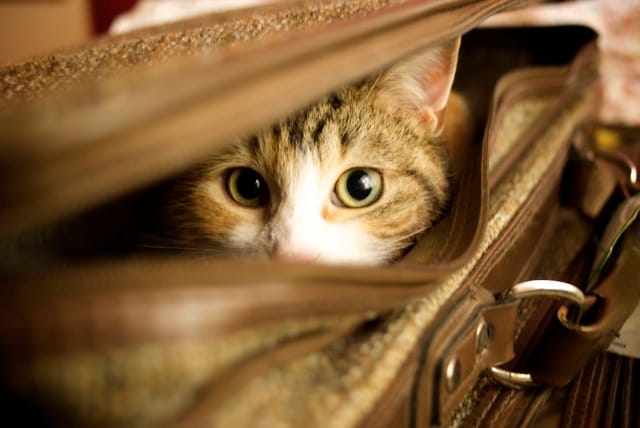
Packing List: Essentials for Traveling with a Cat
Traveling across Europe with your cat requires preparation. Here’s a comprehensive checklist:
✅ Cat Carrier – Airline-approved and spacious
✅ Litter Box & Scoop – Compact, portable travel boxes available
✅ Cat Litter – Choose odor-free, lightweight options
✅ Microchip Details – Keep documentation on hand
✅ Rabies Vaccine Record
✅ AHC Paperwork – Issued within 10 days of departure
✅ Calming Spray (Feliway) – To reduce anxiety during travel
✅ Collapsible Food and Water Bowls
✅ Cat Harness & Leash – For brief outdoor stops
✅ Pet Insurance Certificate – With European coverage
✅ Travel Crate Padding or Blanket – Familiar scent reduces stress
Booking Accommodation in Europe with a Cat
What to Look For:
- Pet-Friendly Policies Clearly Mentioned
- No Breed or Species Restrictions (some listings allow dogs only)
- Ground-Floor Rooms – Easier for loading/unloading with a cat carrier
- Air Conditioning or Heating – Essential for your cat’s health
- Close to Green Areas or Parks (for safe outdoor leash time)
Search through:
- Airbnb with pet filters
- Booking.com under “Pets Allowed”
- TrustedHousesitters if you need pet-friendly stays in exchange for care
Air Travel with a Cat to Europe: What You Must Know
Though not as common, flying from the UK to Europe with your cat is possible. Only certain airlines accept cats in-cabin.
In-Cabin Pet-Friendly Airlines:
- KLM
- Lufthansa
- Air France
- Vueling (cabin + cargo)
💡 Most UK-based carriers like British Airways do not allow in-cabin pets, only cargo.
Airline Requirements:
- Soft-sided airline-approved carrier
- Max weight: 8kg (cat + carrier)
- Must fit under seat in front
- Pet health certificates and documentation required at check-in
Check individual airline pet travel pages for the latest updates.
Managing Your Cat’s Anxiety on the Road
Cats often dislike changes in environment, movement, and noise. Managing their stress is critical:
Top Tips for Calmer Travel:
- Start crate training weeks in advance at home.
- Use pheromone sprays like Feliway before and during travel.
- Don’t feed right before the trip—feed 3-4 hours ahead to avoid nausea.
- Use a soft voice and cover the crate if your cat is overstimulated.
Medication? Only use anti-anxiety meds or sedatives prescribed by a vet.
Pet Insurance for European Travel
You should never travel without insurance—for both you and your cat.
What Pet Insurance Should Cover:
- Vet costs abroad
- Emergency repatriation
- Cancellations due to pet illness
- Lost pet cover (for cats who slip out of carriers or accommodations)
👉 Recommended: Petplan offers some of the most trusted UK policies with European cover add-ons.
Returning to the UK with Your Cat
When you re-enter the UK, make sure to comply with re-entry rules, or your cat may face quarantine:
- Microchip scanned
- Rabies vaccine still valid
- AHC issued within 10 days of outbound travel is valid for re-entry within 4 months
- Tapeworm treatment not required for cats (only for dogs)
Travel back via approved ports and inform customs if you’re carrying a live animal.
Final Tips for a Smooth Experience
- Always call accommodations and transport ahead to reconfirm pet policies.
- Use ID tags on carriers in case of emergencies.
- Avoid long drives in one go; take frequent breaks.
- If traveling in summer, drive early morning or late evening to avoid heat.
- Track your trip with apps like Pet Travel Advisor or Tractive GPS for Pets.
✅ Focus Keyword:
“Travel with cat from UK to Europe”

